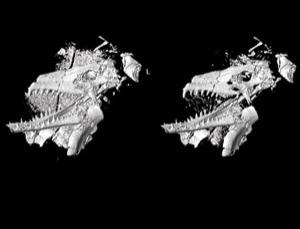New Three Dimensional Printing Proving Beneficial to Palaeontologists
Producing Three-Dimensional Fossils Using Resin
Palaeontology may still be very much a case of using your eyes to spot fossils and such fossil prospecting is always going to be an important part of this Earth science but more and more technology is being employed to give palaeontologists an insight into the fossil specimens that they find. The advent of affordable three-dimensional printers that can produce an object from scanned images is helping scientists to produce copies of the fossils they discover and allowing them to share their discoveries with other museums without having to go to the expense of using conventional casting techniques.
Palaeontology
Palaeontologists working at the museum of Natural History in Rio de Janeiro (Brazil), have invested in a portable CT scanner to help them determine what fossil material may be contained in an individual block of stone that they excavate. Even locating fossils, has become much easier with ground penetrating radar providing field teams with information about the orientation of any fossil specimen in the ground. The images this radar can produce thus guides the excavation team and helps with the safe removal of any matrix material, after all, one careless blow with a geological hammer could damage a precious and rare fossil beyond repair.
Once the location and position of a fossil has been calculated, circular saws can cut out a section of rock, the block, which may represent Cretaceous sediments from the famous Santana Formation of eastern Brazil is then subjected to a further aspect of 21st Century technology – three-dimensional CT scans. Portable CT scans (computerised tomography), permit the block to be penetrated by powerful X-rays which can be analysed by computer to produce information about what fossils are present in the individual block. This work is usually carried out in the safety and relative comfort of the museum’s preparation lab.
Data from Scans
This data from the 3-D scan can be analysed by one of the new three-dimensional printers and within hours a replica of the object can be printed out using resin. The scientists can have their own fossil replica to help them study the delicate structures of any fossil that they find.
The combination of CT scans and three-dimensional printers is helping to change the study of ancient animals. Already the Brazilian team have used this combination of technologies to gain a better understanding of a fossilised snake and a crocodile skull dating from the Late Cretaceous.
Examining the Structures of a Crocodile Skull in Three Dimensions
Picture credit: Sergio Azevedo
Commenting on the use of these new techniques, Sergio Azevedo of the Natural History Museum of Rio de Janeiro stated:
“We are developing several research lines in palaeontology using CT and surface 3-D scanning. These include the nervous system and biomechanics of crocodiles, dinosaurs and other vertebrate fossils.”
This is a non-destructive technique and with prices of three-dimensional printers likely to come down over the next twelve months or so, more museums, universities and even schools can gain access to this technology. The 21st century is seeing a cross-over of technology from different scientific disciplines providing palaeontologists with the opportunity to create accurate, highly detailed replicas of the fossils they discover.
Visit Everything Dinosaur’s award-winning website: The Website of Everything Dinosaur.


